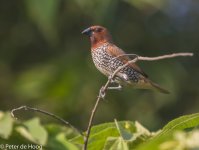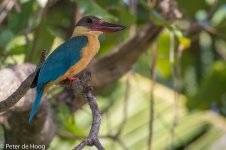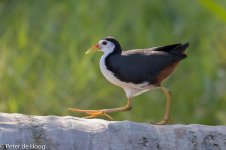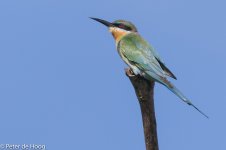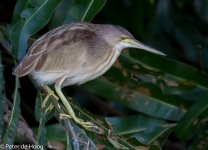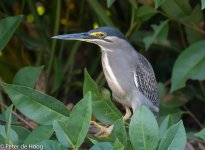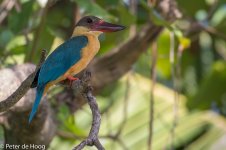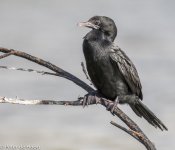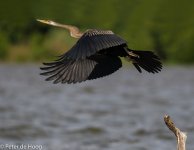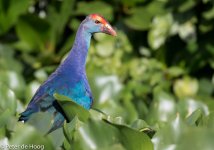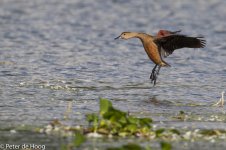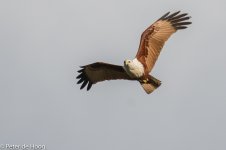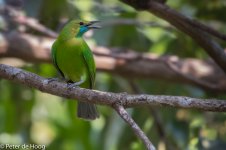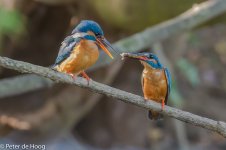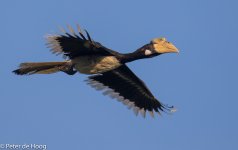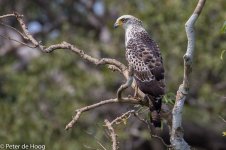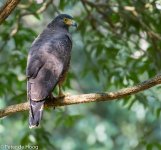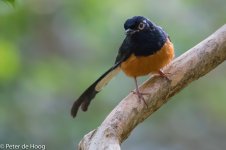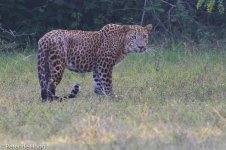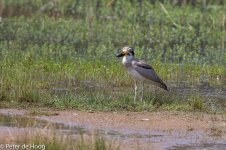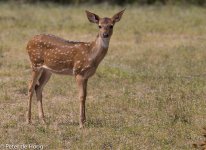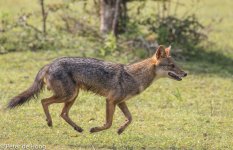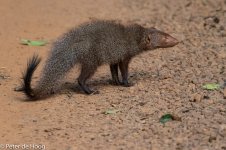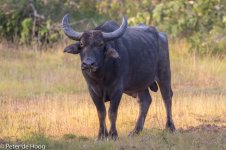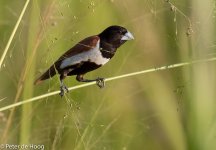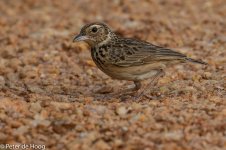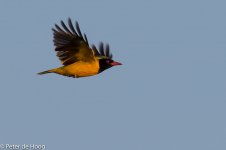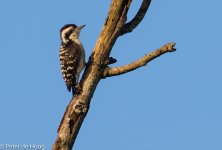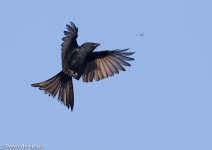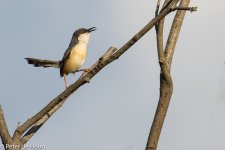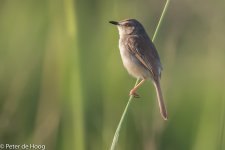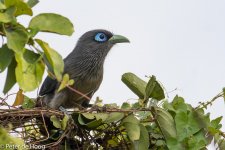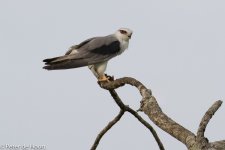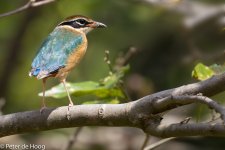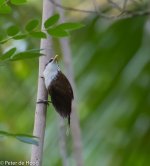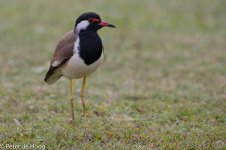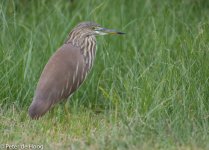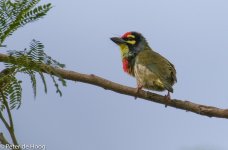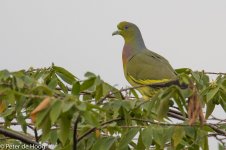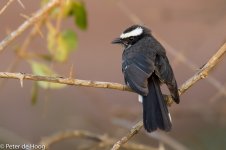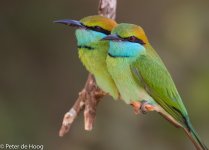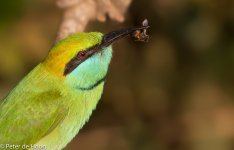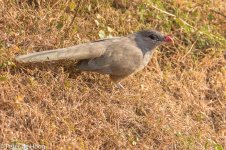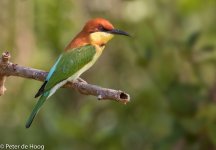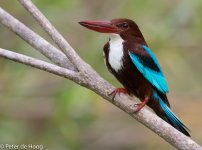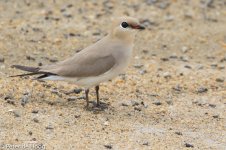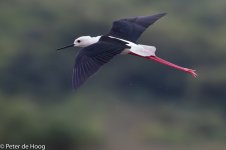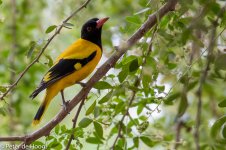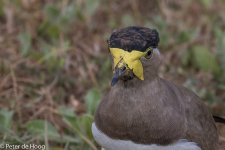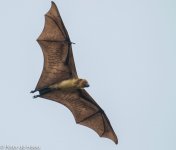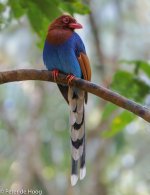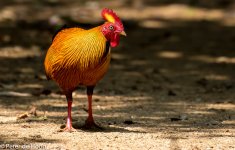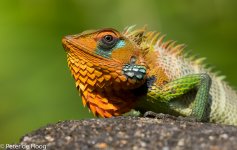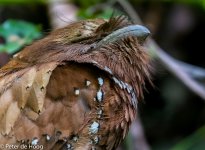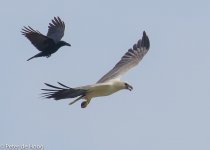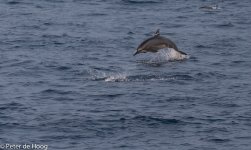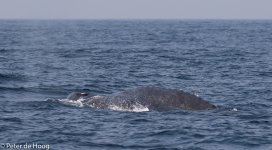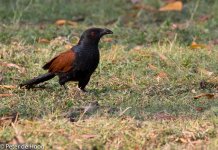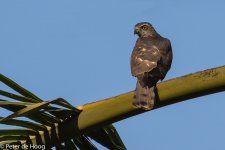PeterBird
Well-known member

I have recently returned from a three-weeks' trip to Sri Lanka with my wife. A first-time visit for us, in fact a first-time visit to Asia. We wanted to get a good taste of the country and specifically its birds. Nothing like ' cleaning up the endemics' or anything like that. Just see a lot of variety and hopefully return with some good pictures. I owe many thanks to people, who posted trip reports here before ( some inspiring ones by Dave Williams) as they helped us in preparing our itinerary.
We made use of a driver/guide, who travelled with us for the better part of our stay, a pleasant man, who told us a lot about the history and culture of the country and could help us identify quite a few birds.
My equipment consisted of the Canon 7DII with the 100-400II. All the photos were taken hand-held, as I did not want to carry a tripod on our walks and the portability of the combo, plus the excellent IS of the lens, certainly made this a viable option. Of course, in the darker parts of the rainforest, the people with tripods had a distinct advantage, but that was a price I willingly paid. I am not very strong, but, with the aid of a Black Rapid strap, I could easily carry this set-up for quite a while.
The dual card slot of the 7DII allowed me to take a large number of shots, before having to switch cards. To my dismay, upon returning from the trip, I found that the largest of my CF cards (32GB), could not be read anymore, whichever method I tried. Fortunately I always make backups, for which I use an iUSB port with HD. Not for the first time, I was grateful I had done so. It would have cost me some 1000 photos
We used KLM and Sri Lankan Airlines for our flights, with a change-over at Heathrow on the way there and a change-over at Paris, Charles de Gaulle on the return flight. The latter was a mess. We were directed to the wrong terminal, appeared to have been transferred to another flight nobody had told us about and, consequently, arrived in Amsterdam without our luggage. This was delivered to our home address the day after, so no big deal, but I was a little worried since my suitcase contained both my telescope and the backup disk. ( Only 7kgs of hand luggage are allowed with Sri Lankan Airlines)
We found people in Sri Lanka to be friendly and helpful. We were impressed with some of the cultural sites we visited (e.g. Pollonaruwa) and we saw 182 species of birds, of which 20 were endemics.
We made use of a driver/guide, who travelled with us for the better part of our stay, a pleasant man, who told us a lot about the history and culture of the country and could help us identify quite a few birds.
My equipment consisted of the Canon 7DII with the 100-400II. All the photos were taken hand-held, as I did not want to carry a tripod on our walks and the portability of the combo, plus the excellent IS of the lens, certainly made this a viable option. Of course, in the darker parts of the rainforest, the people with tripods had a distinct advantage, but that was a price I willingly paid. I am not very strong, but, with the aid of a Black Rapid strap, I could easily carry this set-up for quite a while.
The dual card slot of the 7DII allowed me to take a large number of shots, before having to switch cards. To my dismay, upon returning from the trip, I found that the largest of my CF cards (32GB), could not be read anymore, whichever method I tried. Fortunately I always make backups, for which I use an iUSB port with HD. Not for the first time, I was grateful I had done so. It would have cost me some 1000 photos
We used KLM and Sri Lankan Airlines for our flights, with a change-over at Heathrow on the way there and a change-over at Paris, Charles de Gaulle on the return flight. The latter was a mess. We were directed to the wrong terminal, appeared to have been transferred to another flight nobody had told us about and, consequently, arrived in Amsterdam without our luggage. This was delivered to our home address the day after, so no big deal, but I was a little worried since my suitcase contained both my telescope and the backup disk. ( Only 7kgs of hand luggage are allowed with Sri Lankan Airlines)
We found people in Sri Lanka to be friendly and helpful. We were impressed with some of the cultural sites we visited (e.g. Pollonaruwa) and we saw 182 species of birds, of which 20 were endemics.




